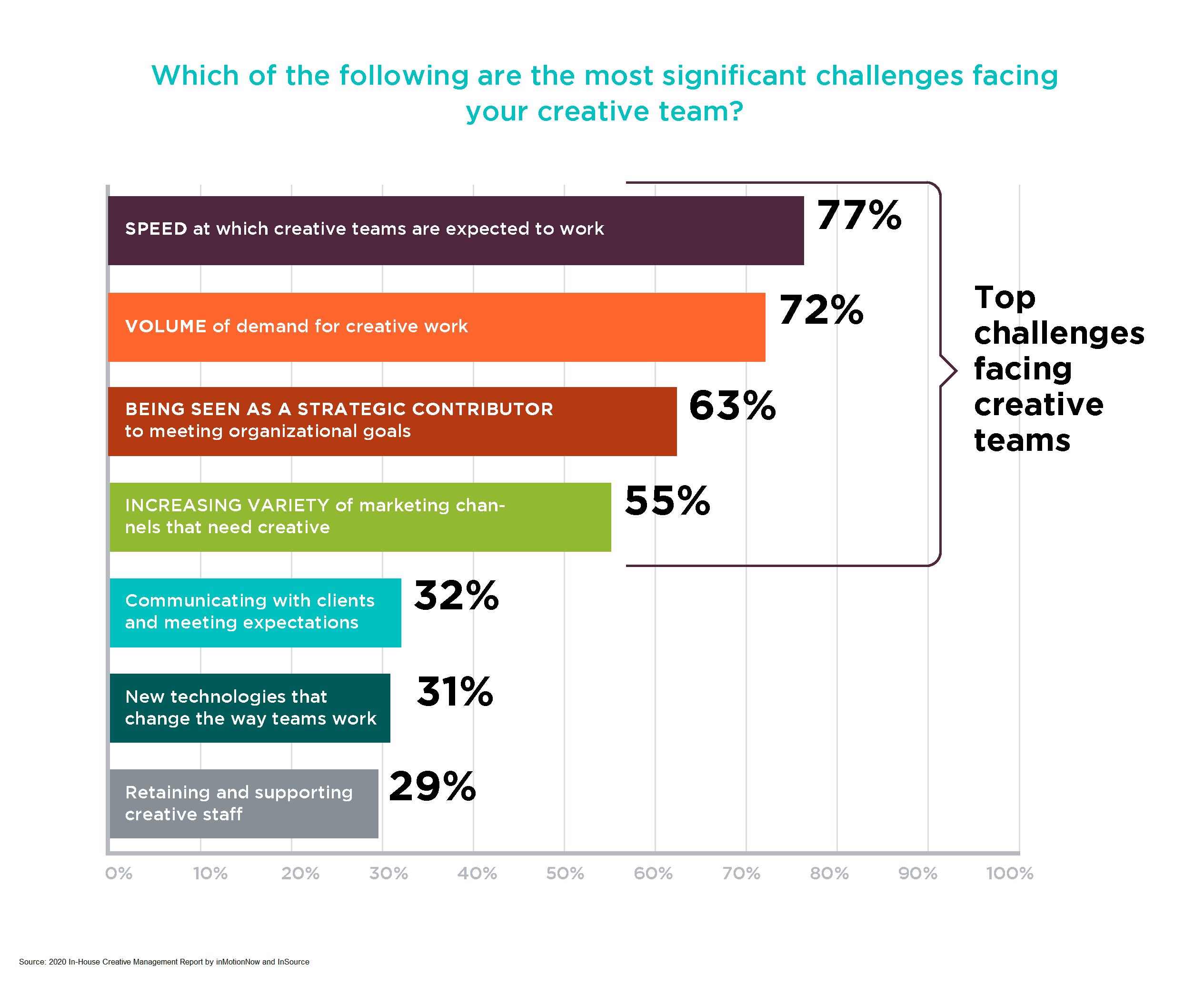Content requests vary from organization to organization, but they all seem to have one thing in common: stakeholders always need projects done yesterday.
The push for unrealistic deadlines can damage morale across the marketing and creative team. However, there are some techniques marketing leaders can employ to put some structure and process in place that will alleviate the pressure on their team—and produce data to show the value of their work to the business.
Define “standard” and “rush” projects
How long any given project takes depends on the type of project. However, if your organization tracks this information over time—from request to completion—you’ll generate the data to determine an average.
For example, Franklin Energy, which manages a massive 1,600 projects a year, uses data to define a “standard” project. In other words, on average, the typical project in their organization requires 30 days—from initial request to final approval. Any project requested with a deadline of fewer than 30 days is classified as a “rush” job.
Scope creep begins with small changes
The difference between “standard” and “rush” projects sounds straightforward. Where things can go awry is when stakeholders request “little” changes to existing assets.
This is work that isn’t supposed to take a lot of effort to complete. Often, it means modifying an existing content asset—such as updating a logo on a white paper or resizing a graphic to fit a new landing page.
On the surface, it doesn’t seem like a big deal, except requestors will try to use quick little changes to get their foot in the door—and then circumvent the defined content process by adding more changes to the original request. The next thing you know, a project that should have taken a few minutes is essentially an entirely new project.
This disrupts the team’s workflow and rhythm. It can also siphon resources that were dedicated to projects that were properly requested, which just adds to the pressure on the content team.
Spell out what is and isn’t a “little” change
As with standard and rush projects, a good technique for managing scope creep on “little” requests is to put some parameters in place. Franklin Energy has given these a label they call “fast track” and keeps a tally—just as they do for “standard” and “rush” projects.
Fast track projects must reference an existing content asset with these defining characteristics:
- Small design touch-ups, like changing colors or logos
- Minor copy updates to text, like boilerplate language
- Requests must have fewer than X changes in total
- Review and approvals are limited to X rounds
Anything outside these parameters is considered a new project and a new request is required. Content teams need to define these standards and strictly enforce them to keep the content machine chugging for the greater good of the organization.
Parlay the data into a dashboard
As a result of the structure and process—the team will naturally record the data to manage expectations. This is important because many stakeholders who work outside of marketing rarely see the effort that goes into content for the overall organization; they only see the output of their requested projects.
Tracking content projects by type, volume, completion time, and requestor enables the marketing team to graphically illustrate the work it’s delivering to the business. Below are some examples.
- Track content projects by type. Labels are useful for distinguishing between standard, rush, and fast track jobs. In aggregate, this demonstrates the volume of work and pressure the content team is facing.
- Track content projects by completion time. The only way to know how long any given project takes is to track the number of days it takes to complete every project. You’ll quickly build a data set that demonstrates when a requested timeline is aggressive and should be categorized as a “rush” job.
- Track content projects by requestor. Tracking who requests projects by department will help you identify patterns. For example, in combination with the project type, you can see which business units are prone to request “rush” projects. The presentation of the data to leadership, say on a quarterly basis, can go a long way toward helping to set priorities.
- Surfacing trends in content production. Over time, you’ll collect data that will enable you to demonstrate trends in efficiency, volume, and type. For example, year-over-year comparisons can show how the team completed more projects than the prior year, and in a shorter time. In this way, you’ve demonstrated efficiency gains. When the proverbial call to “do more with less” goes out, you’ll have the data to demonstrate your need in a way business leaders understand.
Process and data are anecdotes to pressure
The content beast is insatiable and the struggle to feed it is real. Survey research inMotionNow has conducted annually demonstrates that volume, speed, and the variation of content projects are consistently among the top five challenges facing marketers and creatives.
That sort of pressure is a fact of life in content marketing. However, by putting some definitions, structure, and process in place, you’ll be collecting data to manage expectations and prove value – all while efficiently producing the content assets your organization needs.








